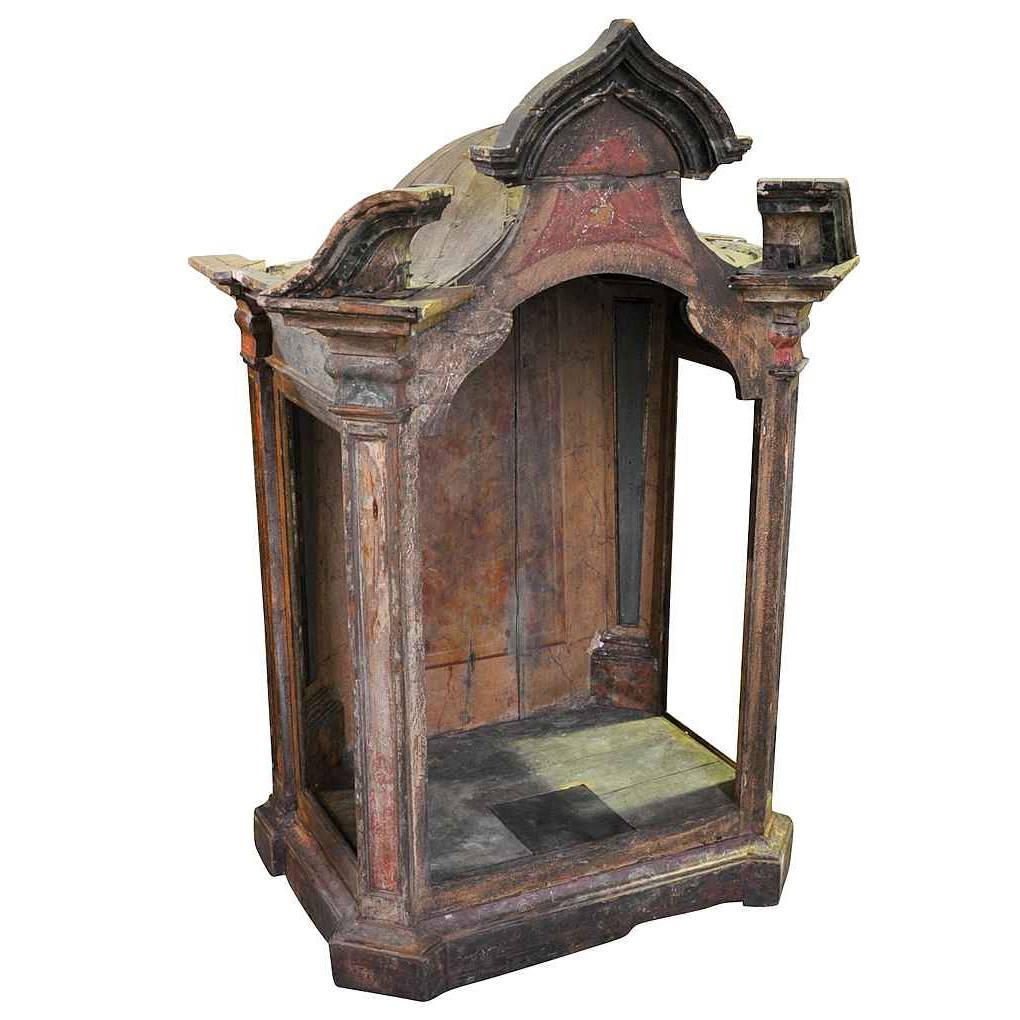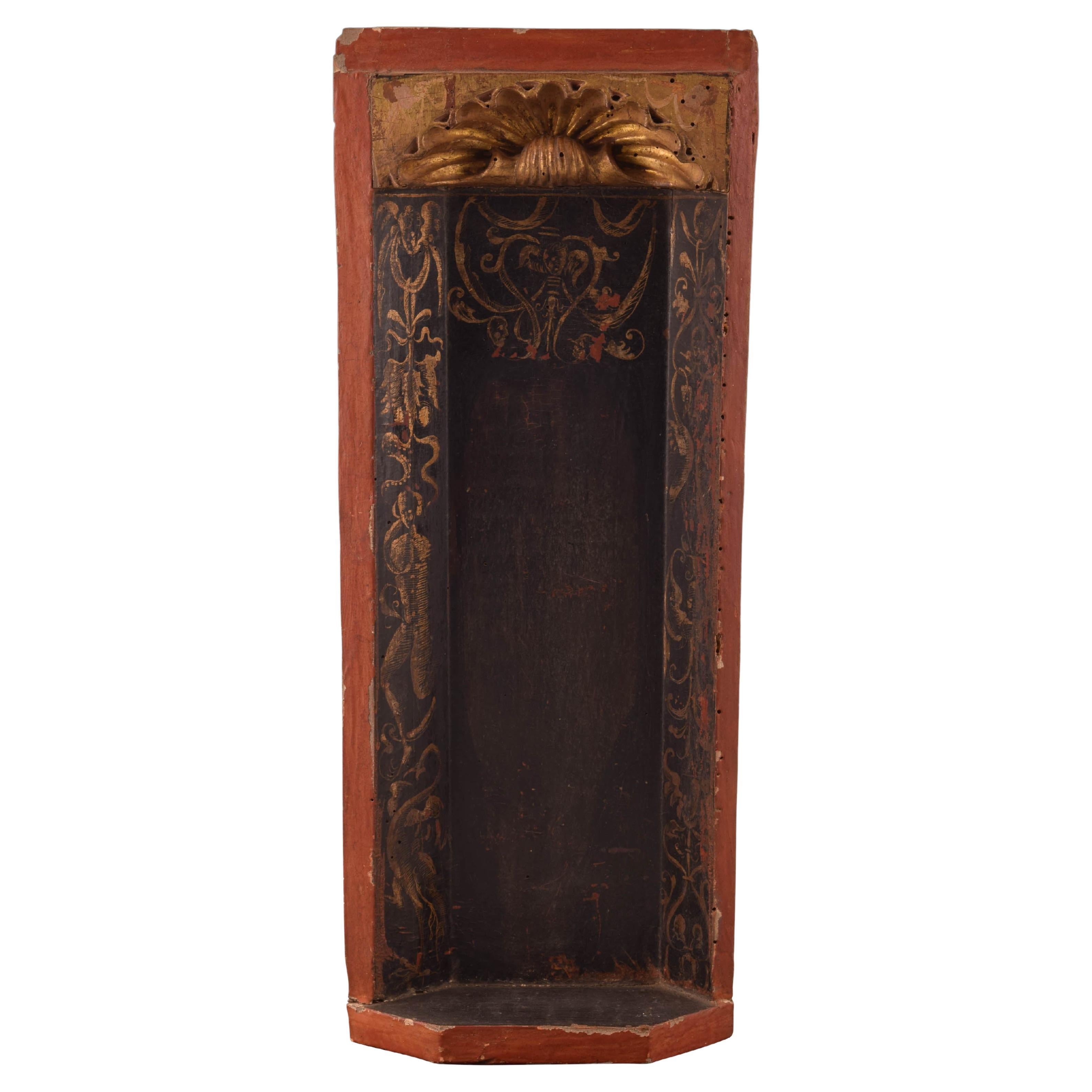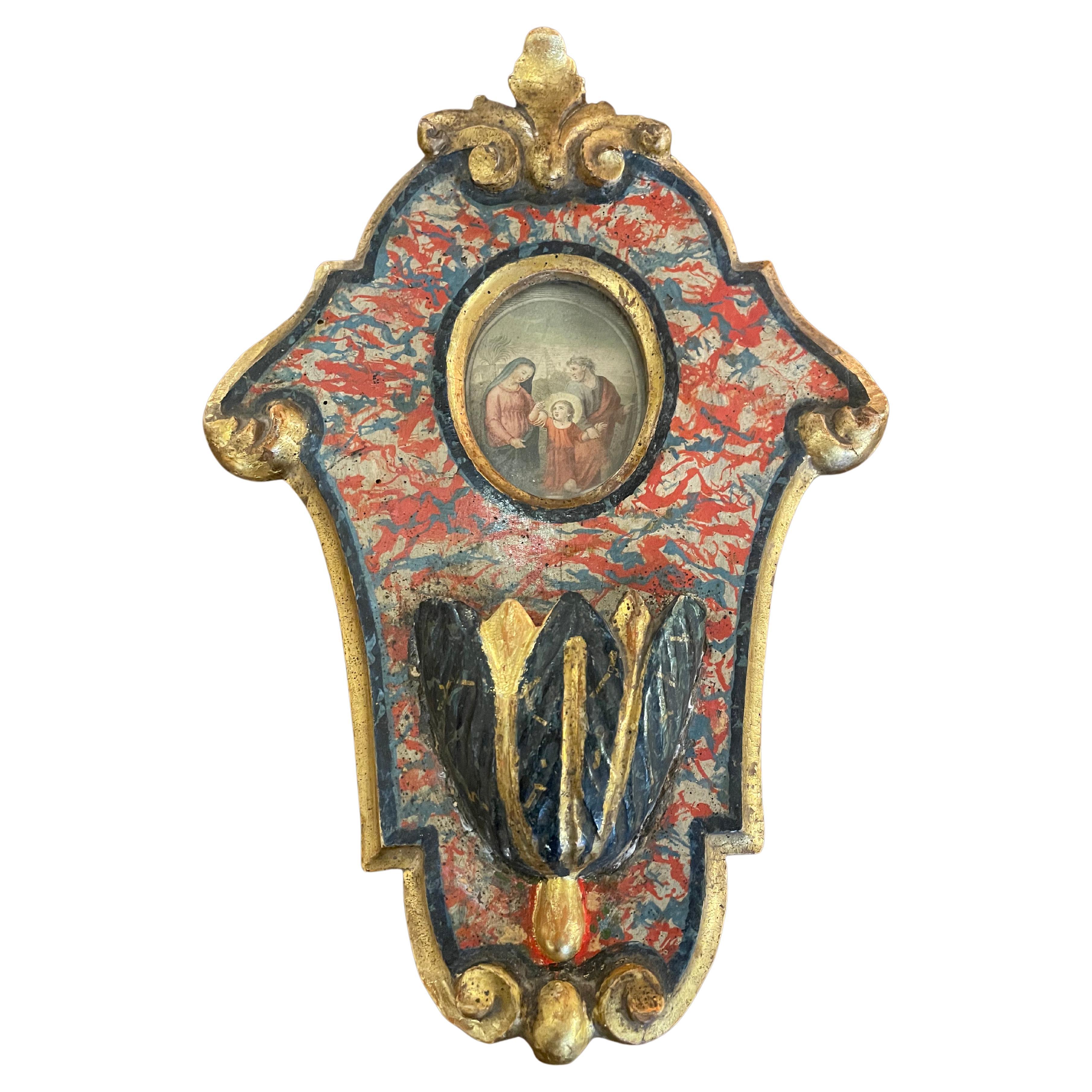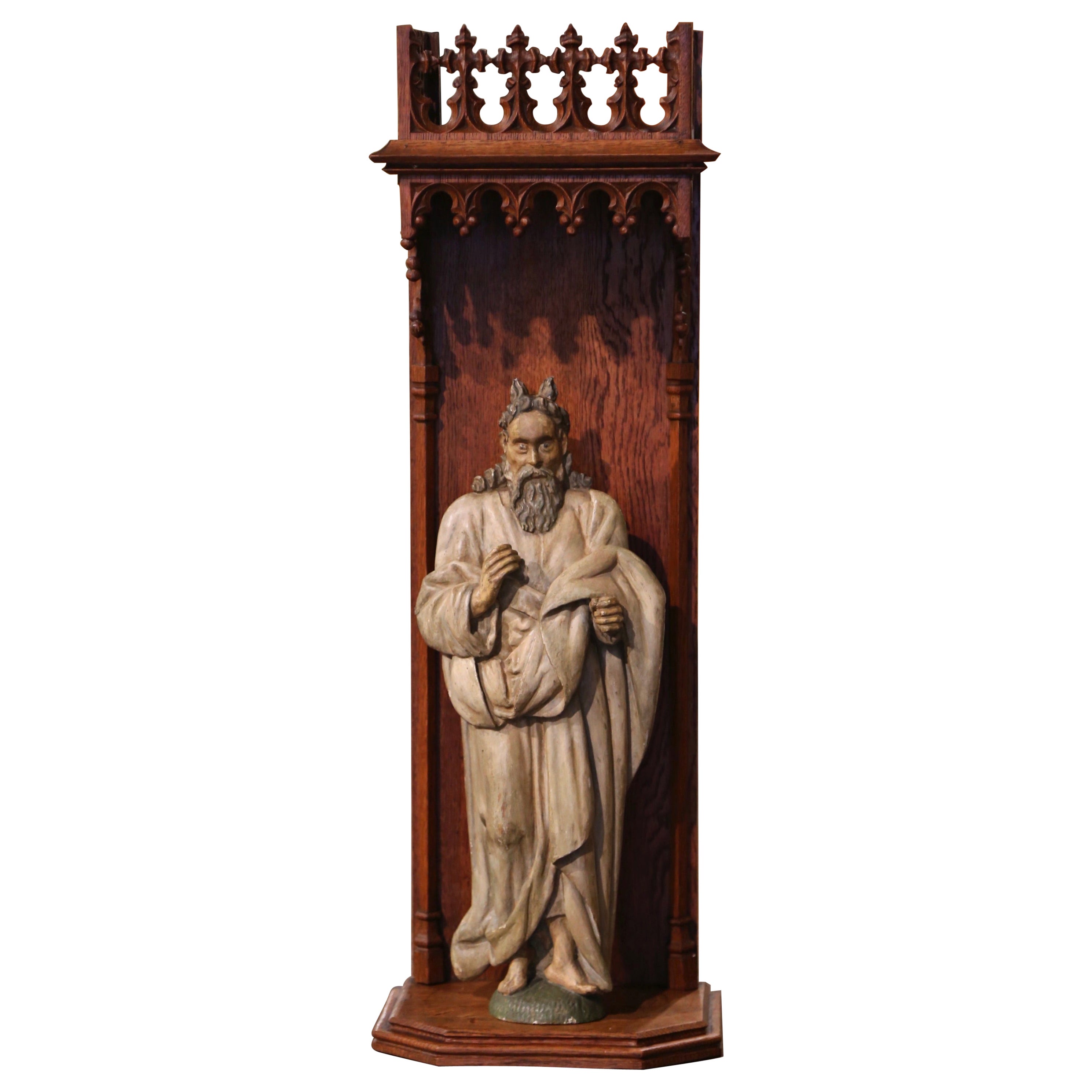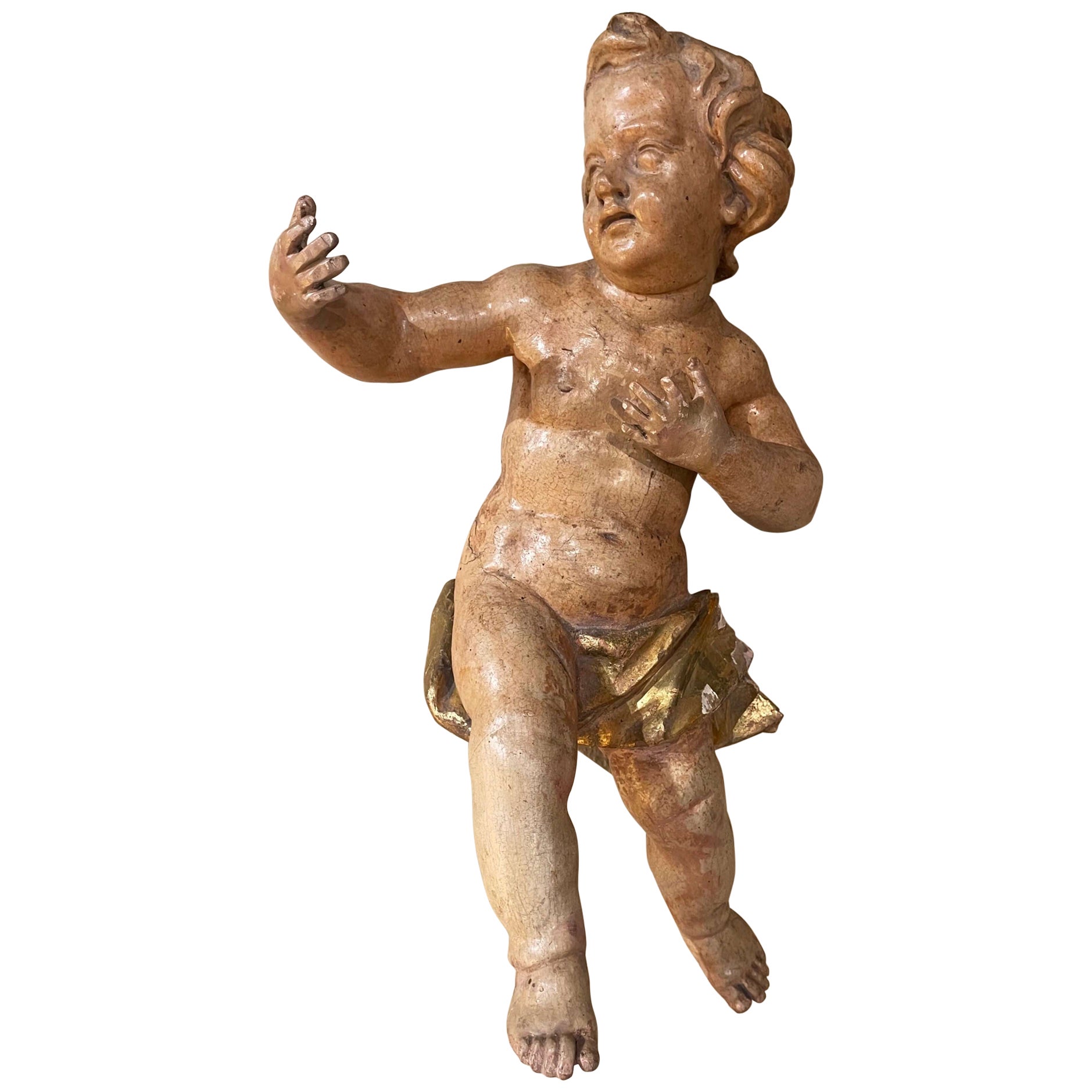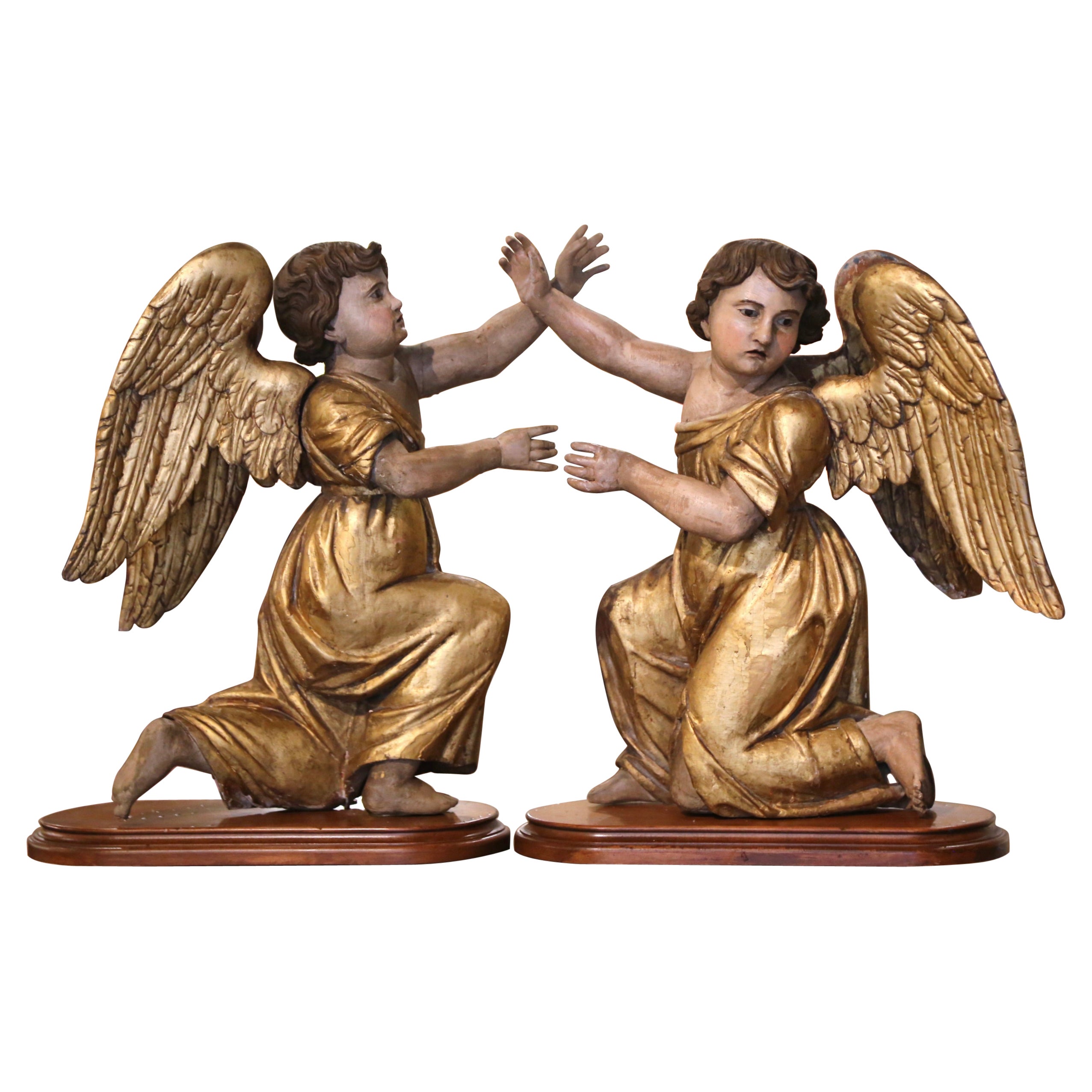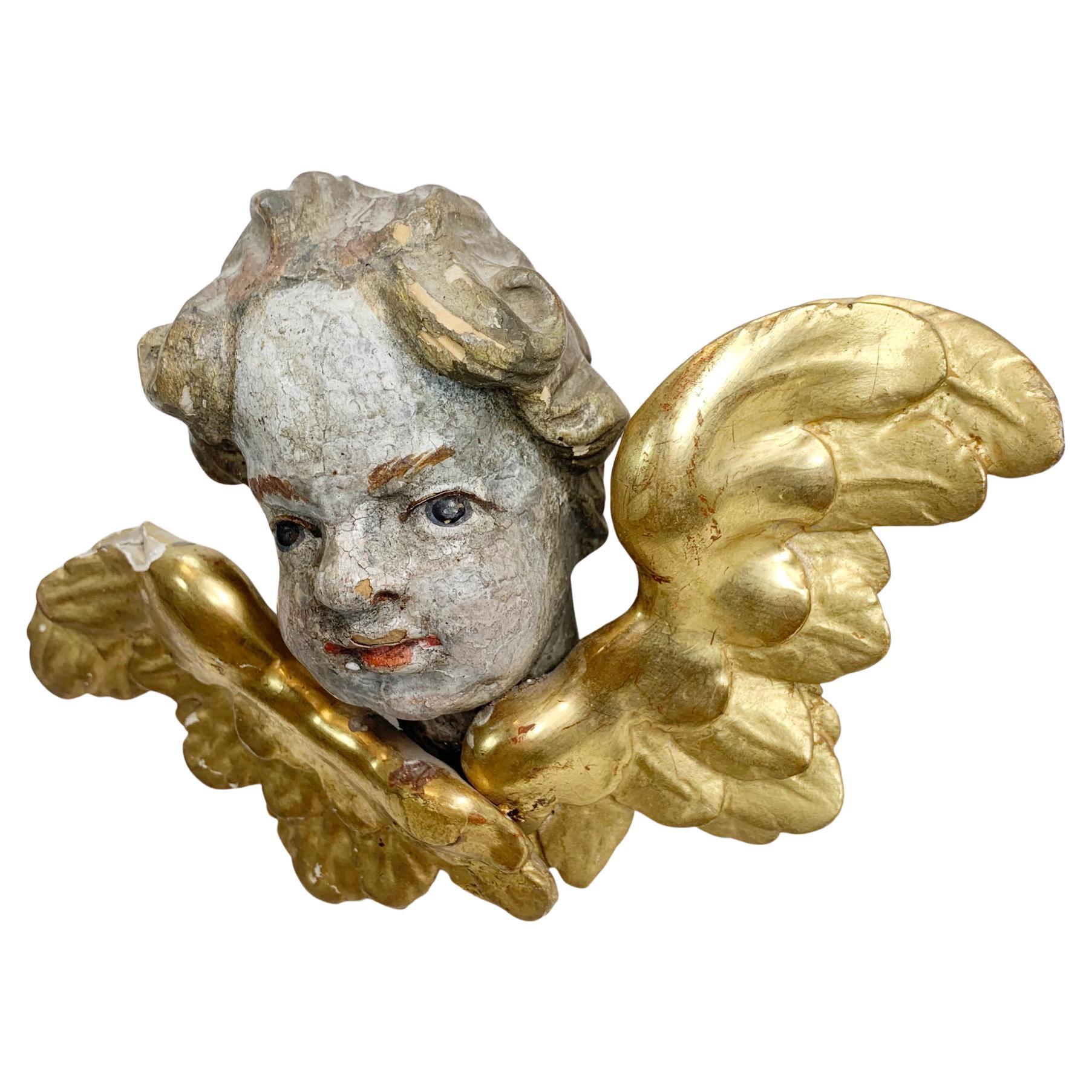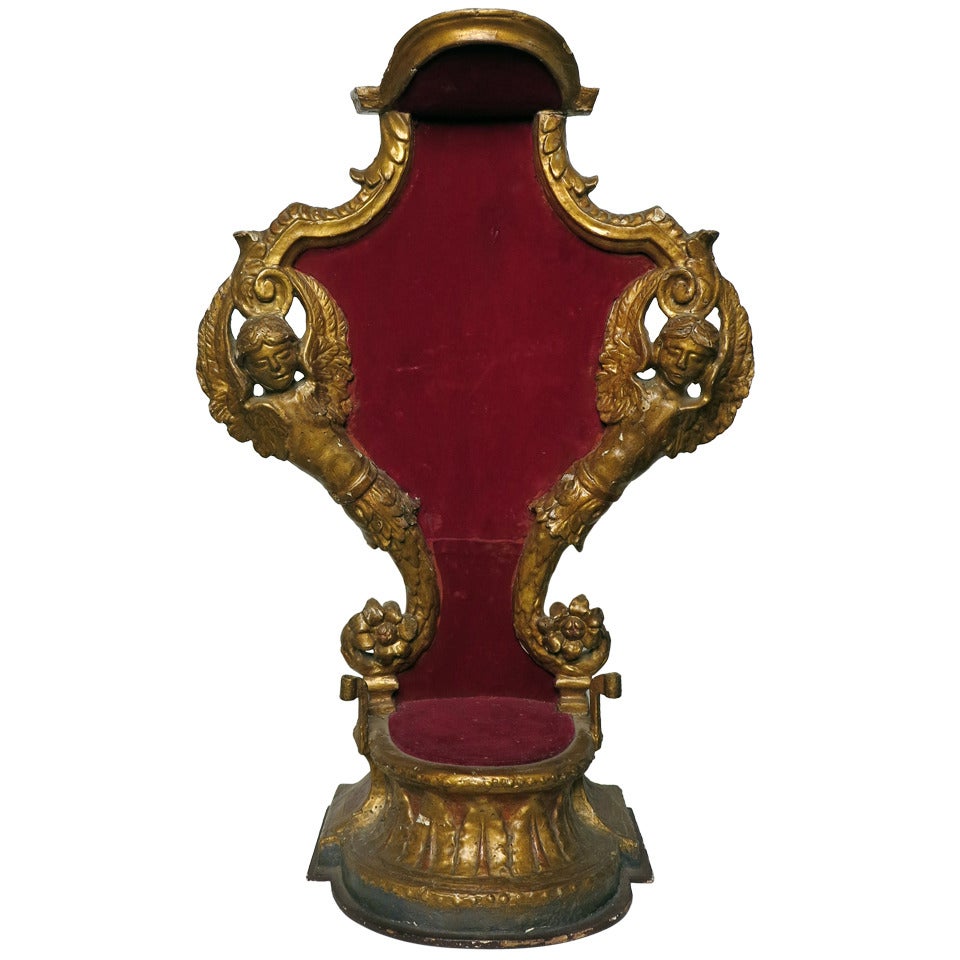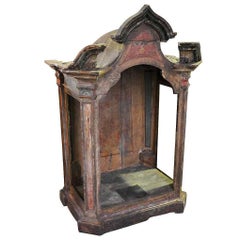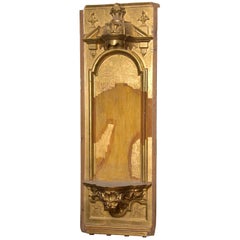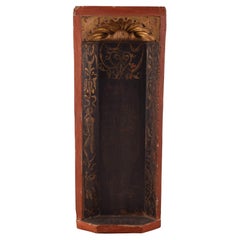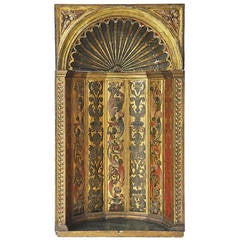
18th Century Italian Gilt and Polychrome Niche
View Similar Items
1 of 10
18th Century Italian Gilt and Polychrome Niche
About the Item
- Dimensions:Height: 45.75 in (116.21 cm)Width: 26 in (66.04 cm)Depth: 15 in (38.1 cm)
- Materials and Techniques:
- Place of Origin:
- Period:
- Date of Manufacture:1660-1720
- Condition:Wear consistent with age and use. Minor losses. Some minor loss to black painted surface on interior of dome. Otherwise, in excellent condition, consistent with age and use.
- Seller Location:Geneva, IL
- Reference Number:1stDibs: LU83021308846
You May Also Like
- 18th Century Spanish Polychromed Tabernacle, NicheLocated in Atlanta, GA18th century spanish polychromed tabernacle, niche for the display of Santos. Original finish in somber tones of ochre and siena.Category
Antique 18th Century Spanish Religious Items
MaterialsWood
- Giltwood Niche. Rococo, 18th CenturyLocated in Madrid, ESHornacina formed by a back decorated with molding and a support for a sculpture decorated with a masque and vegetal motifs and topped by a split pediment with a central motif worked ...Category
Antique 18th Century European Rococo Religious Items
MaterialsWood
- Niche. Carved and polychrome wood. 16th centuryLocated in Madrid, ESNiche. Carved and polychrome wood. Century XVI. Wall niche with a rectangular front opening topped by a venerated shape finished in gold with two polychrome angel heads in the corne...Category
Antique 16th Century European Renaissance Religious Items
MaterialsOther
- 18th Century Italian Hand-Carved Polychrome GIlt Holy Water FontLocated in Milan, ITFrom Italy, Marche central region, a polychrome carved holy water font mid-18th century, a shaped panel with carved and gilt scrolls and acanthus leaf details. A green edge decoratio...Category
Antique Mid-18th Century Italian Rococo Decorative Art
MaterialsPoplar
- Mid-18th Century French Carved Polychrome Statue of Moses in Oak NicheLocated in Dallas, TXCrafted in France circa 1760 and resting in a carved oak niche, the figure depicts the prophet Moses, the most important prophet in Judaism and Christianity. Moses is best known from the story in the biblical Book of Exodus and Quran as the lawgiver who met God face-to-face on Mount Sinai to receive the Ten Commandments after leading his people, the Hebrews, out of bondage in Egypt and to the "promised land" of Canaan. He is represented with horns on top of his head. The horns came about because of an ambiguity of the Latin version of Exodus 34, 30. After being addressed by God on top of Mount Sinai and given the Tablets of the Law containing the Ten Commandments, Moses descended to his people in the desert. His face was seen to shine with a divine light. (The first Moses with horns was commissioned in 1505 by Pope Julius II for his tomb; it was based on a description in chapter 34 of Exodus in the Vulgate, the Latin translation of the Bible used at that time). The religious and biblical item...Category
Antique Mid-18th Century French Gothic Religious Items
MaterialsOak
- 17th Century Polychrome Wooden Niche with Angels and PilastersLocated in Marbella, ES17th century Polychrome wooden Niche with Angels and Pilasters.Category
Antique 17th Century Spanish Religious Items
MaterialsWood
